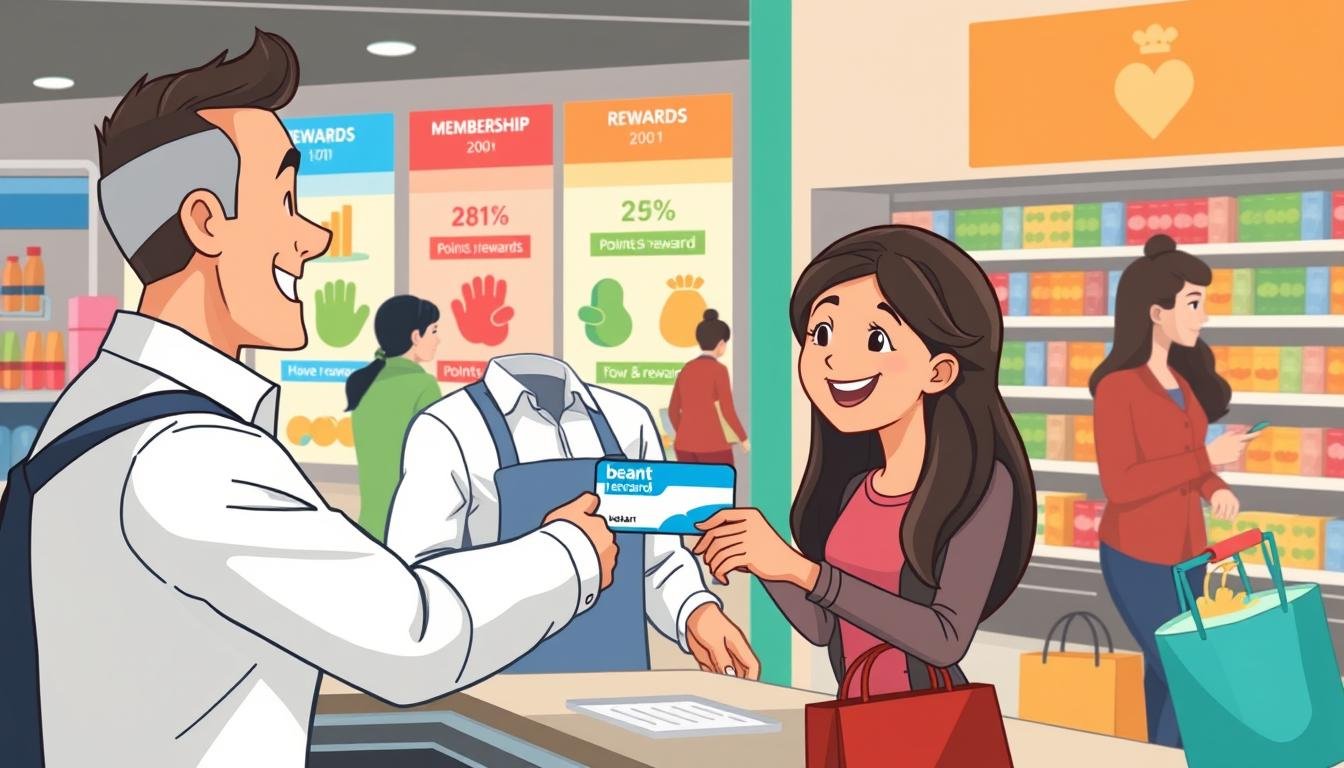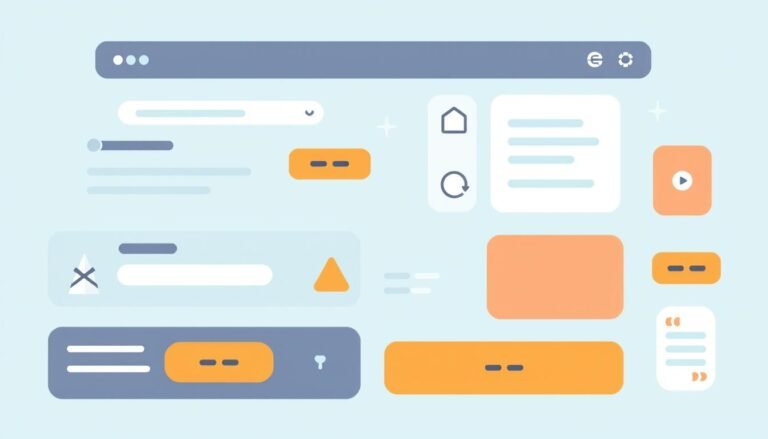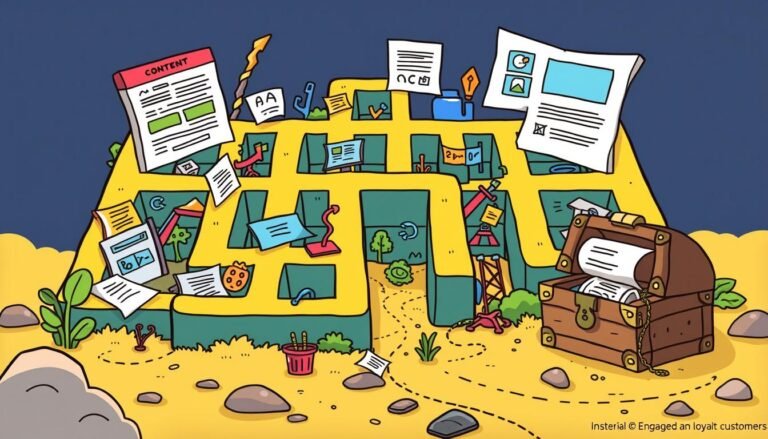How to Implement a Loyalty Program
Did you know that nearly 68% of customers are likely to join a loyalty program if a brand impresses them with its customer experience? In today’s competitive marketplace, knowing how to implement a loyalty program is key. Brands like Starbucks have mastered this, building strong customer relationships and keeping customers coming back. In fact, 56% of consumers are willing to spend more on a brand they love, even if cheaper options are out there.
This section will cover the basics of loyalty programs. We’ll look at how they help with customer engagement and boost revenue. We’ll also share tips on setting clear goals and understanding your audience. These insights will help businesses create a loyalty program that really speaks to their customers.
Key Takeaways
- Effective customer experiences significantly boost loyalty program enrollment.
- Loyalty programs can enhance customer spending and retention rates.
- Understanding different types of loyalty programs is essential for success.
- Clear and achievable goals are critical for loyalty program effectiveness.
- Continuous monitoring and adjustment can keep the program performing optimally.
Understanding Customer Loyalty Programs
A customer loyalty program rewards people for coming back. About 77% of consumers join up to five of these programs. And 93% say they’ve used their rewards in the last six months. These programs help turn occasional buyers into loyal customers.
What is a Customer Loyalty Program?
A loyalty program aims to keep customers coming back and buying more often. It’s all about building a strong bond with customers. By offering rewards like points or discounts, brands keep customers happy and coming back for more.
Types of Customer Loyalty Programs
There are many loyalty program types to choose from, each with its own benefits. Here are some popular ones:
- Points-based programs: Customers earn points for buying things, which they can use for rewards.
- Tiered programs: Customers get rewards based on how much they spend, encouraging them to buy more.
- Paid programs: Customers pay a fee for special benefits, like Amazon Prime.
- Gamified programs: These use games and challenges to keep customers interested, like Starbucks’ fun features.
Choosing the right loyalty program type is key to meeting your business goals and pleasing your customers.
Why are Customer Loyalty Programs Important?
Loyalty programs are crucial in today’s market. They help keep customers coming back, with an 84% impact on their decisions. Focusing on loyalty can lead to more sales and happier customers. Plus, happy customers tell others, boosting sales by $6 trillion a year.
Effective loyalty programs help businesses keep customers, increase repeat sales, and gain big rewards.
Benefits of Implementing a Customer Loyalty Program
Starting a customer loyalty program can really help a business grow. It brings many benefits, like keeping customers coming back, getting more referrals, and saving money over time. This approach strengthens customer bonds and boosts profits.
Improved Customer Retention
Keeping customers is key for long-term success. Studies show that just a 5% increase in customer retention can lead to a 95% profit boost. Loyalty programs make customers feel valued, which keeps them coming back.
Loyal customers often spend 67% more than new ones and are much cheaper to keep. This shows how loyalty programs turn one-time buyers into regulars.
Increased Customer Referrals
Loyalty programs that encourage referrals turn happy customers into brand fans. Research finds that 47% of people are more likely to recommend a brand with loyalty programs. Offering referral rewards motivates customers to spread the word, reducing the cost of getting new customers.
Cost-Efficiency over Time
Loyalty programs become more cost-effective as they lead to more repeat purchases and higher average orders. Tailored rewards can make customers buy more often and increase their lifetime value. By offering special benefits and personalized deals, businesses keep strong ties with customers and smooth out sales ups and downs.
A well-planned loyalty program is a wise investment for long-term success.
| Benefit | Impact |
|---|---|
| Customer Retention | 5% increase can lead to up to 95% profit growth |
| Customer Referrals | 47% likely to recommend due to loyalty |
| Cost-Efficiency | Five times cheaper to retain existing customers |
| Average Spending | Loyal customers spend 67% more than new customers |
How to Implement a Loyalty Program
Starting a loyalty program needs careful planning. It’s important to set clear goals, know what your customers like, and promote it well. This way, you can make experiences that really connect with your customers.
Define Clear Goals for the Program
Setting clear goals is key for a loyalty program. These goals could be to keep customers coming back, increase sales, or get more people involved. Having clear goals helps you plan your strategies better. It also makes it easier to see if you’re doing well.
Checking in on these goals often helps keep your program in line with what your customers want.
Choose the Right Program Type
Picking the right loyalty program type is crucial. You could go for points, tiers, value, or games. For example, points might work well for regular customers, while tiers could motivate your top customers to buy more.
Understanding these different types helps make your program more effective.
Know Your Audience
Knowing who your customers are is vital. Use feedback, analysis, and data to make sure your rewards match what they like. Talking to customers through surveys and social media helps promote your program.
It also builds a community and trust with your members.
Promote Your Loyalty Program
Good marketing is key to getting people to join. Use emails, social media, and in-store ads to show off the perks. Keep reminding customers about the program with fun content.
Loyalty Program Best Practices
Creating a successful loyalty program means knowing the best ways to keep customers engaged and happy. It’s key to offer rewards that really matter, keep in touch regularly, and make offers personal. This approach makes customers feel valued and boosts their satisfaction.
Creating Meaningful Rewards
It’s crucial to give loyalty program rewards that customers will love. Studies show that rewards should be worth at least 10% of what customers spend. This makes them want to stick with the program. Some great rewards include:
- Discounts on future purchases
- Exclusive access to events or products
- Personalized gifts based on customer preferences
By tracking how customers use their rewards, businesses can make their offers even better. This keeps customers coming back for more.
Consistent Communication with Customers
Good communication is key to a strong bond with customers. Keeping them updated on loyalty program perks, milestones, and special deals makes them feel part of something special. Using different ways to communicate, like:
- Email newsletters
- Social media platforms
- In-app notifications
helps keep the program on customers’ minds. This leads to more meaningful interactions and a closer community feeling.
Personalization of Offers
Making offers personal is a big part of making loyalty programs great. By using data from past buys and interactions, businesses can make content that speaks to each customer. This builds loyalty. Adding special touches like:
- Birthday rewards
- Special deals based on what they’ve bought before
gives customers a unique and engaging experience. This makes them more likely to come back and interact more often.
| Reward Type | Impact on Customer Engagement |
|---|---|
| Discounts | Encourages repeat purchases |
| Exclusive Access | Fosters community feeling |
| Personalized Gifts | Strengthens customer relationship |
Measuring the Success of Your Loyalty Program
Measuring loyalty program success needs a strategic plan. It uses various metrics and customer insights. By using loyalty program analytics, companies can track key performance indicators. This helps understand how the program connects with customers.
Utilizing Analytics and Reports
It’s important to regularly report on metrics like switching ratio, Net Promoter Score (NPS), and enrollment rates. Tools like customer relationship management (CRM) systems help analyze these metrics well. Here are some key indicators to consider:
| Metric | Description |
|---|---|
| Enrollment Rate | Percentage of customers who sign up for the loyalty program relative to the total customer base. |
| Repeat Purchase Rate | Percentage of customers making multiple purchases over a defined period. |
| Redemption Rate | Percentage of issued rewards that customers redeem. |
| Customer Retention Rate | Percentage of customers retained over a specified time, reflecting loyalty program effectiveness. |
Collecting Customer Feedback
Getting customer feedback is crucial for improving loyalty programs. Businesses can use surveys and focus groups to get insights. This feedback makes customers feel involved and gives important data for loyalty program adjustments. By knowing what customers like, companies can make the program more relevant and satisfying.
Adjusting Strategies Based on Data
Successful loyalty programs need to be adaptable. Companies should adjust loyalty program strategies based on data and customer feedback. Being flexible lets brands make changes like:
- Adjusting rewards to better match customer preferences.
- Improving promotional efforts to increase engagement.
- Adding new ways to communicate with customers.
Using data-driven decisions keeps businesses competitive and meets customer needs. Regularly checking customer segments and loyalty metrics helps spot areas to improve. This leads to timely changes that make the program more effective.
Conclusion
Starting a loyalty program can really change the game for businesses looking to improve customer relationships and grow. About 75% of businesses see loyalty programs as key to keeping customers engaged. It’s important to know what customers want and like.
By setting clear goals and using the best methods, companies can build strong loyalty. This loyalty can lead to more sales. In fact, loyalty programs can increase customer retention by 5-25%.
This shows how loyalty programs can boost a business’s success. Loyal customers are 70% more likely to tell others about the brand. This word-of-mouth can greatly improve a brand’s image and attract more customers.
Also, using data from loyalty programs can lead to a 5-10% increase in sales. This proves the value of targeted marketing. By updating the program often, companies can keep it interesting to their customers.
The secret to a successful loyalty program is knowing what customers like and do. By making experiences personal and rewarding loyal customers, businesses can create a program that keeps customers coming back. Using smart practices in setting up a loyalty program helps it last and succeed over time.
Source Links
- Loyalty program implementation: a step-by-step guide
- Beginner’s Guide to Starting a Rewards Program | Mailchimp
- The Beginner’s Guide to Building a Customer Loyalty Program
- Loyalty Program: Definition, Purpose, How It Works, and Example
- 9 Benefits of Loyalty Programs (With Examples) | LoyaltyLion
- 10 Benefits of Implementing a Loyalty Program
- 10 Benefits of Loyalty Programs: Why Loyalty Is Key | Yotpo
- The Step-By-Step Guide to Loyalty Program Implementation | Yotpo
- How to create a customer loyalty program in 9 steps | TechTarget
- How to build a customer loyalty program: A comprehensive guide
- 37 Loyalty Program Best Practices for the Perfect Concept
- Loyalty program management: 8 proven practices for managing your loyalty program
- Typical Implementation Timeline For A Loyalty Program & Best Practices
- Loyalty program metrics: Measuring the health of your loyalty program
- 8 Metrics to Track the Success of Your Loyalty Program
- Council Post: Measuring The Success Of Your Loyalty Program With Optimal KPIs
- How to Create a Timeline for Implementing a Loyalty Program | Toki Blog
- Loyalty Program Best Practices for Immediate Business Growth
- Unlock Customer Loyalty: The Ultimate Guide to Effective Program Management








